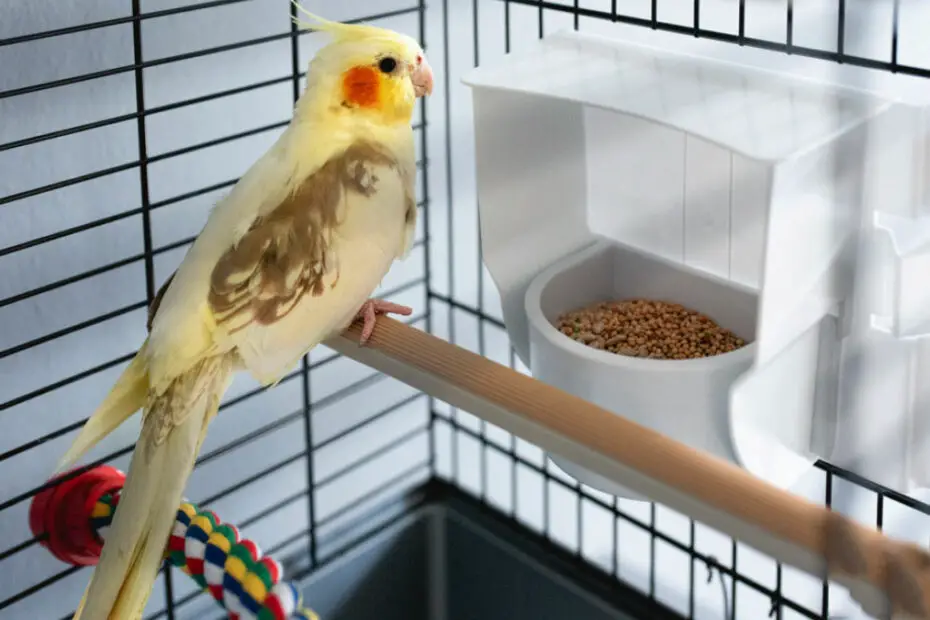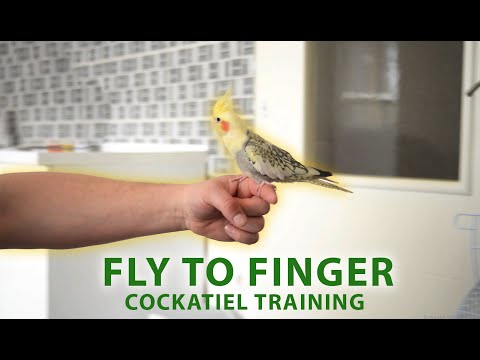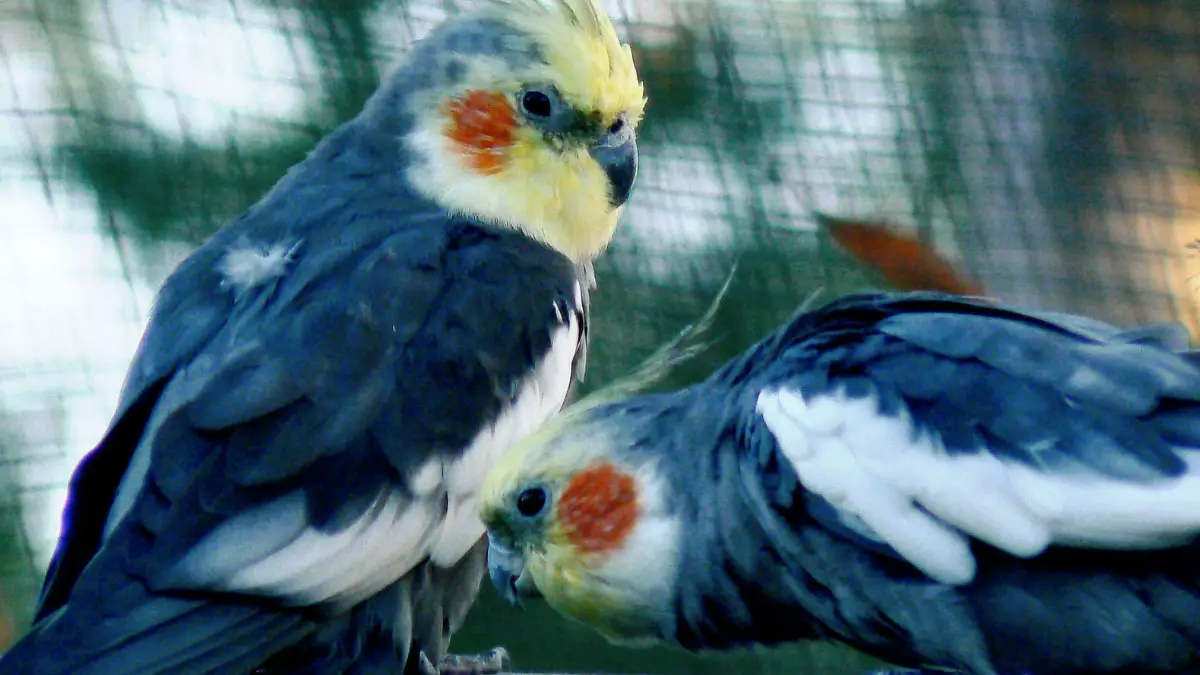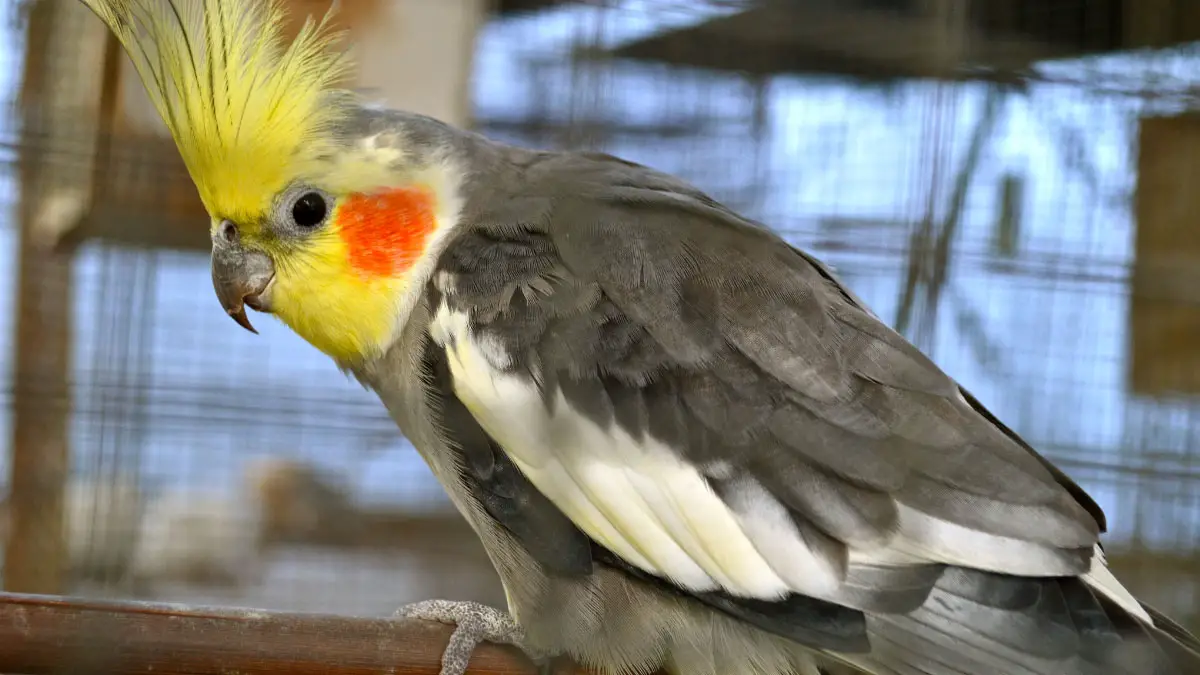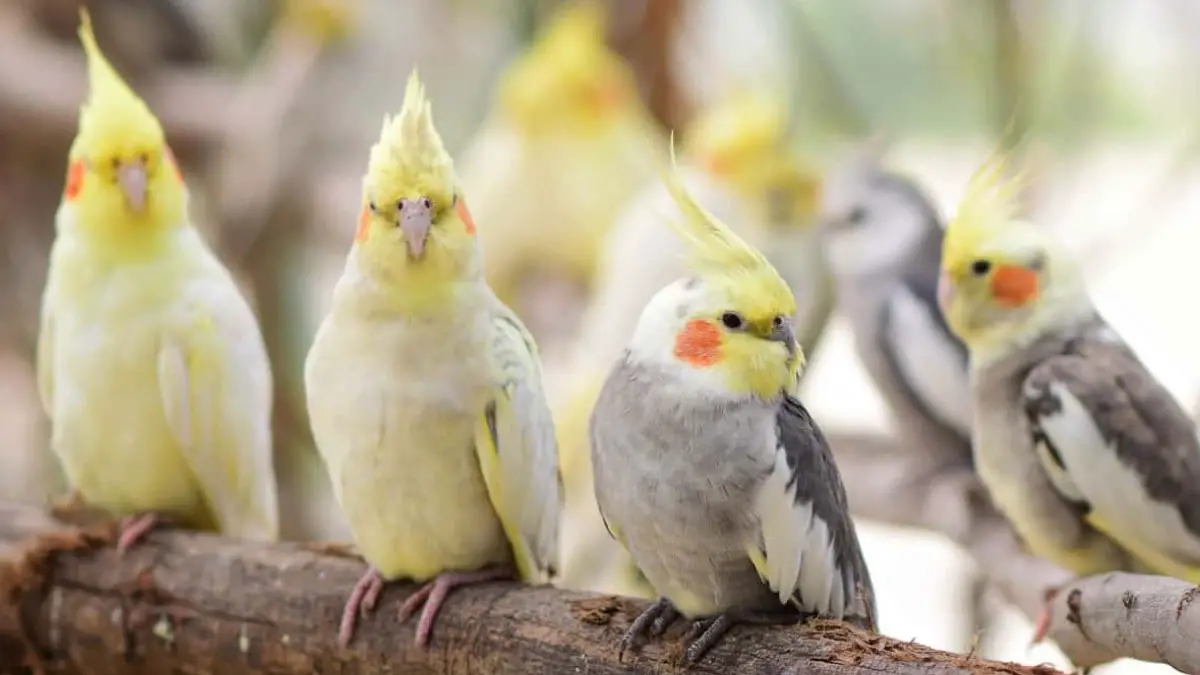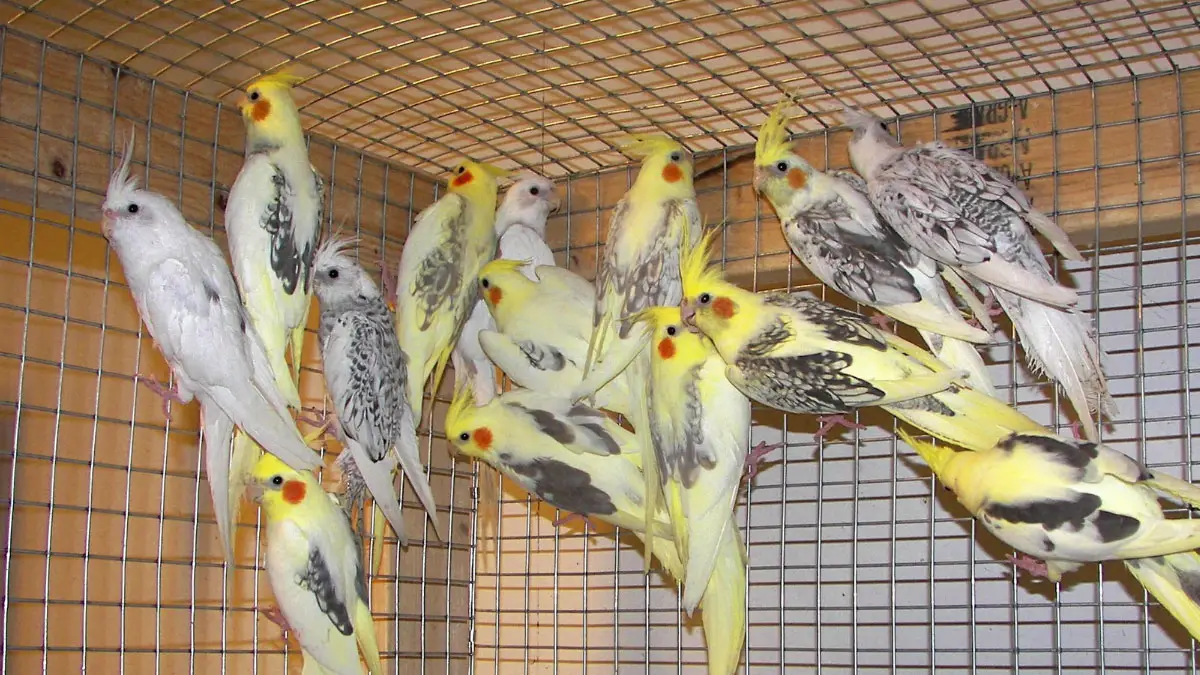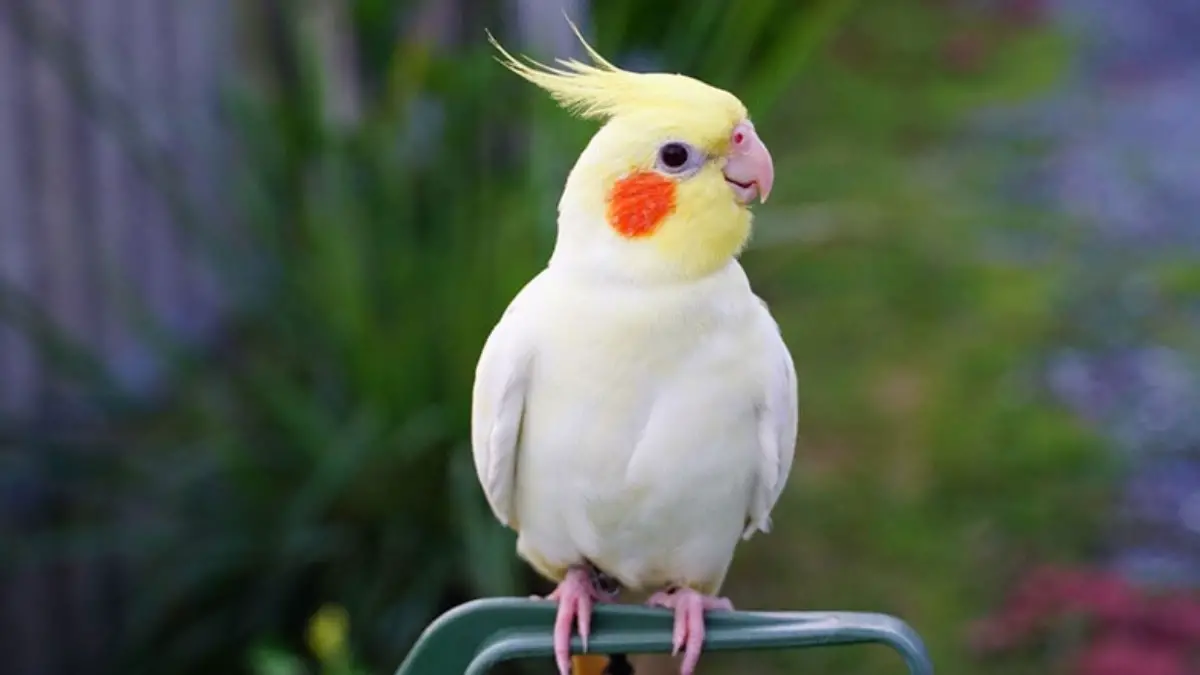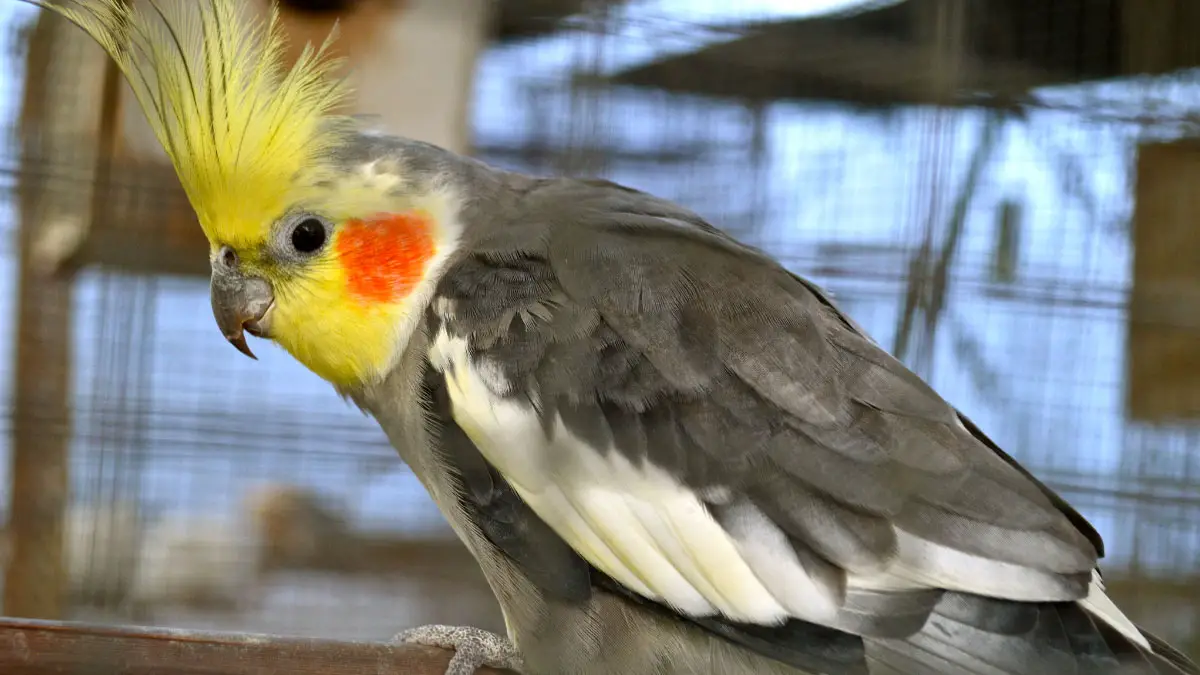Do you want your cockatiel to fly safely? Well, it is easier said than done. When birds are born in the wild, they learn to fly naturally. But if they were born in an indoor facility, their natural instinct remains dormant in their mind. So, it becomes necessary that you give it flight training very patiently.
With that being said, how to teach cockatiels to fly safely? The key is confidence. You need to increase your pet’s confidence first by making it flap its wings and then gradually covering a little distance in the air. It will take a few weeks for it to fly properly. But once its natural instincts are unlocked, there is no stopping it.
Flying helps your feathered friend stimulate the mind and reduces boredom. In their natural habitat, birds spend most of their time flying. Denying them this basic need can lead to stress and anxiety.
Here in this article, you will learn everything about your pet’s flying behavior, pre-flying training, and flying techniques. You will also get some tips for indoor flying and safety consideration and precautions while taking it for outdoor flying.
Understanding Cockatiel Flying Behaviour
Cockatiel ranks second as the bird that people prefer as a pet. There is a solid reason for that. It is a medium parrot-like bird that doesn’t take up much space at home. But this indoor reliability also hampered their flight sense.
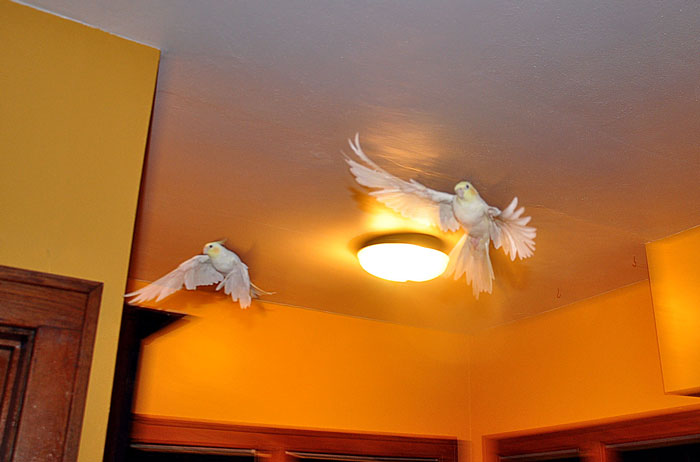
In general, cockatiels are fun-loving birds. They mostly spend their time flying from here to there at a speed of 44 mph. In the wild, they roam around in groups but keep enough distance from one another that they can have their own space.
Cockatiels have a unique flight style. It involves rapid wing flapping, gliding, and hovering. Their small and compact body makes them highly maneuverable in flight.
Even in captivity, they can be trained to fly. With regular flight exercises and motivation, your pet birds will take to the sky in no time.
Factors that influence cockatiel’s flight ability
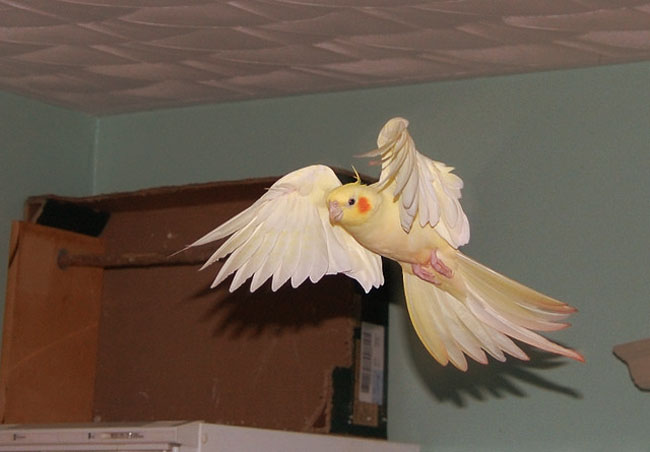
There are many factors that influence a cockatiel’s flying behavior. Here are a few general things you need to know before you start teaching your bird to fly indoors:
| Factors | Description |
|---|---|
| Wing length | Cockatiels with longer wingspans are better flyers than those with shorter wingspans |
| Age | Young cockatiels are often more active flyers. Older birds may fly less frequently or not at all |
| Bird Cages | Cockatiels that are kept in small cages or confined spaces may have weaker flight muscles and limited flying ability. When kept in the cage for a long time, birds tend to forget and lose their ability to fly for good |
| Diet | Cockatiels require a healthy and balanced diet to maintain proper weight and muscle strength, which can impact their ability to fly |
| Wing Clipping | Clipping a cockatiel’s wings can limit its flight ability but can also prevent it from flying into dangerous situations or getting lost. You can clip its wings but not too little that it can’t fly at all |
| Cockatiel Species | There are 22 cockatiel species found to this day. The species mostly differ in terms of color. It does not have much impact on its flying |
Natural Habitat
Cockatiels are native to Australia. They are typically found in open, lightly timbered areas close to freshwater. i.e., open woodlands and savannahs threaded with waterways or bordered by water holes. They also inhabit more arid regions. There they forage for food in one place and fly long distances for water.
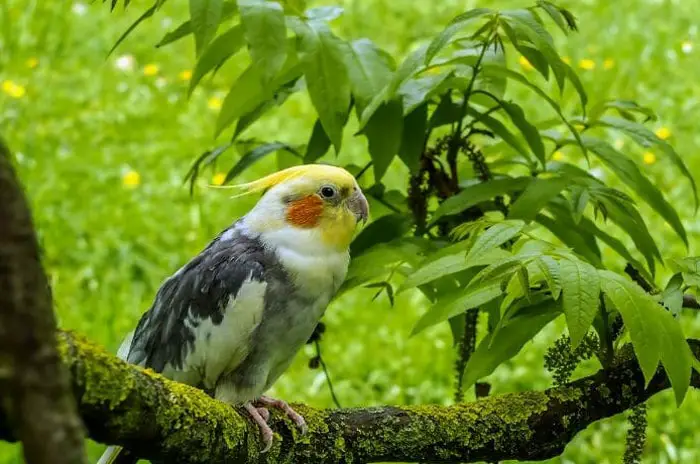
The natural habitat of the cockatiels has shaped their bird behavior and flying. Their long-distance flying technique and temperature endurance made them inhabit areas where other parrots or cockatoos cannot survive. The open spaces and water sources found in their natural habitat have also contributed to their flying habits.
For pet cockatiels, it is important to provide a large and open living space and positive reinforcement. Mimicking their natural habitat as much as possible can also help them.
Importance of Bird-Proofing
Bird-proofing your apartment is an essential bird care step. Here is why you would need to do it:
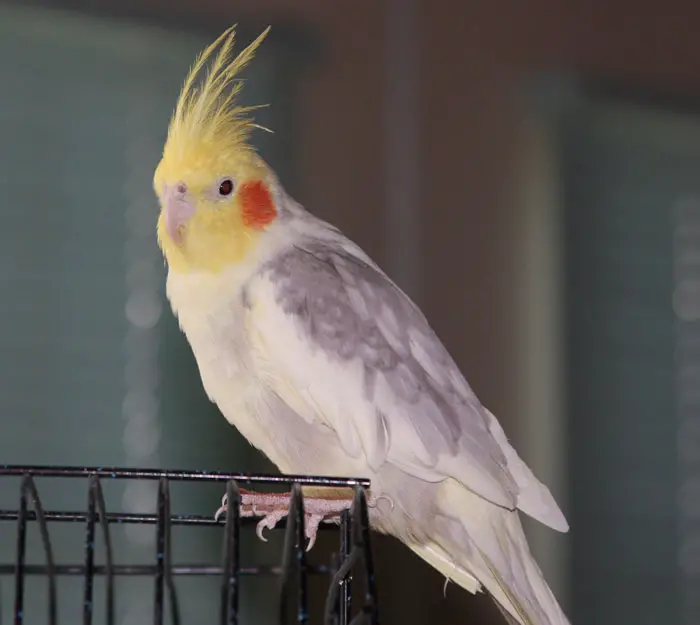
Injury Prevention
Cockatiels are curious and intelligent birds that enjoy exploring their surroundings. This curiosity may lead it to areas that could be potentially harmful. They can also ram into mirrors or windows, get stuck into small spaces, or cut their wings in any household item.
Protecting your belongings
Cockatiels love to chew and can cause damage to household items. So, it is better to bird-proof your place to save your stuff.
Safe Flying Environment
By bird-proofing your house, you can provide safe flying techniques for cockatiels and reduce stress.
Pre-Flight Training
The first thing you need to focus on before bird training is trust building. If the bird does not trust you, it may become frightened, stressed, or aggressive during flight training. This can be dangerous for both your pet friend and you. Here are a few bonding exercises to help your bird feel comfortable with you:
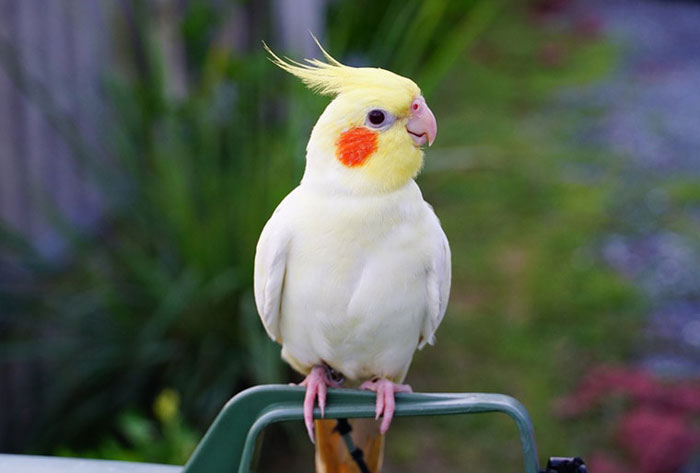
Spend Time Near Your Bird’s Cage
Set aside a few minutes a day to sit beside your bird’s cage. Talk to it and offer it treats. This will help your bird get used to your presence and voice.
Bird Treat
Give it the treat to have a good bond. Birds are fond of millet or small pieces of fruit. This can help it associate you with positive experiences.
Perch or Shoulder Training
Perch is standing where birds can stand outside their cage. Once your cockatiel is comfortable in its new surrounding, you can get a perch for him to stand on. You can also train it to stand on your shoulder. This will help it feel more comfortable with you and establish a closer bond.
Talking to Your Pet
Talking to your feathered friend regularly can help it get used to your voice. Talk to it as much as you can.
Bird toys
Offering your bird toys to play with can help keep it occupied and prevent boredom. This fun environment can lift their mood. A happy bird learns fast.
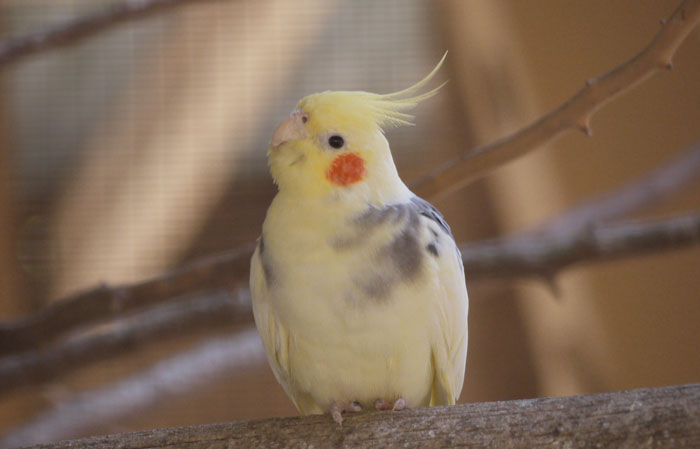
Target Training
This is a method of positive reinforcement training. Here you use a stick or a clicker as a target to guide and reward your pet’s behavior. In target training, you teach your bird to touch the target with its beak or foot. And when they do that, you give them a reward.
This method can help to build trust and strengthen the bond between the owner and the cockatiel.
Basic Obedience Training
Basic obedience training involves two steps, recall and landing training. In recall training, you teach your bird to come towards you when you give it some kind of call. And landing training teaches your bird to land on your hand or a designated perch.
For recall training, call your bird’s name and use a consistent command such as “come” or “here”. When your bird comes to you, immediately offer the reward and praise.
For landing training, start by teaching your bird to land on your hand while it’s perched on a stable surface. Hold out your hand and use a consistent command such as “land” or “step up”.
Here is a tutorial for recall training for you to get a better understanding:
How to Train a Cockatiel to Fly: Flight Training Techniques
Birds that have been absent from their natural habitat will have a hard time flying on their own. They would require care and training in this case.
- You have to be patient and take one step at a time.
- Gradually building up your bird’s flight skills is crucial for ensuring a safe environment. It also increases the success rate and it is important to start with short flight exercises, low altitudes, and easy flight patterns.
- Then you can move on to more challenging maneuvers. This allows your bird to become comfortable with flying.
- Avoid pushing your bird too hard too soon. It can cause physical and emotional stress. Thus, this can lead to injury or even loss of trust.
- Additionally, forcing a bird to fly too soon can result in a negative association with flying. Your bird may become traumatized by the whole experience.
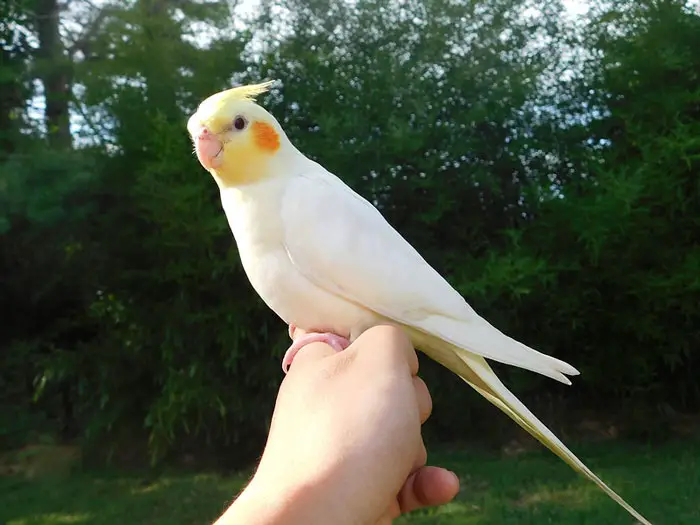
Different flight exercises
Here I will give some cockatiel flight training tips for beginners so that you can help your enhance bird’s flying capabilities. I will give you some exercise ideas. A word of advice here is that you take your bird to an outdoor place for this.
Vertical Training
This type of training involves encouraging your bird to fly upward in a controlled manner. For this training, follow these steps:
Step 1: Start by holding your bird at shoulder height.
Step 2: Then encourage them to flap their wings.
Step 3: Slowly move your hand upward. Motivate your bird to follow suit.
Step 4: When your bird reaches the highest point they can comfortably fly, reward them with a treat. Praise them often.
Step 5: Repeat this exercise every day. Gradually increase the height your bird is comfortable flying to.
Level Flight
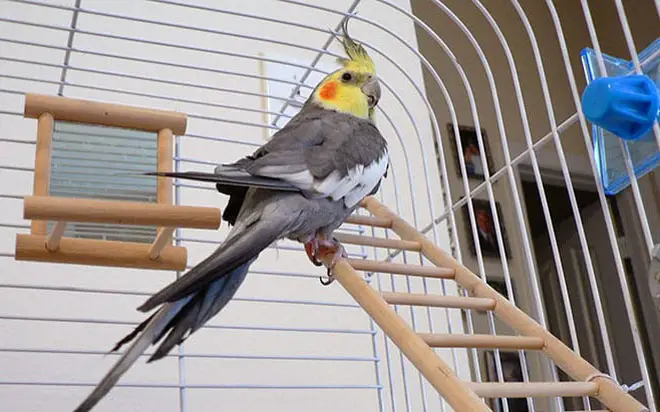
Level flight training involves teaching your bird to fly straight and level. Here your bird needs to maintain a consistent height above the ground or other objects. To train your bird in level flight, follow these steps:
Step 1: Start by holding your bird a few inches off the ground.
Step 2: Encourage them to fly straight ahead towards a target.
Step 3: Gradually increase the distance between you and the target, and also the height off the ground.
Turning Flight
Turning flight exercises are important for helping your cockatiel learn to maneuver through the air and change direction while flying. Here are a few exercises you can try:
- The first is Figure eight training. For this, set up two perches in an open space. Then cheer your bird to fly in a figure-eight pattern between them.
- Another is Zig-zag flying. Set up several perches in a line. Motivate your bird to fly back and forth between them. Gradually increase the distance. Add more perches to make the pattern more complex.
- The last is Chase the toy. Here use a bird-safe toy, such as a feather wand. Encourage your bird to fly after it. Move the toy in different directions to help your bird learn to change direction while flying.
Landing Training
Here you practice landing after your bird has taken flight. Simply follow this process:
- Start by encouraging your bird to fly short distances
- Then gradually increase the distance
- Now, place a landing perch or platform in a strategic location
- Encourage your bird to land on it by offering a treat
Monitor your bird’s physical and mental health during training
It is crucial to monitor your bird’s physical and mental health during this type of flight training. Flying can be a strenuous activity for a bird. Especially if they are not used to it. So, it is important to ensure that they are fit enough to undertake the training.
During training, monitor your bird’s breathing, heart rate, and overall energy levels. If your bird seems lethargic, panting excessively, or struggling to keep up with the training, it may be a sign that they are not physically up to the task.
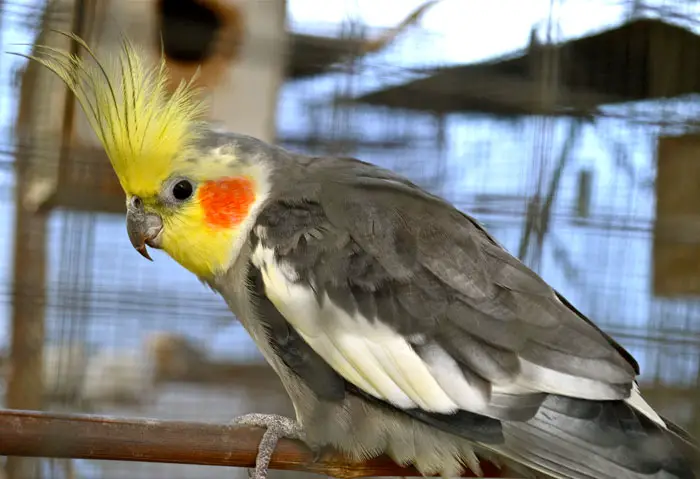
In such cases, it is best to stop the training and consult with avian veterinarians. You can also make your pet take a bath in bird baths. These are shallow containers of water. They can be either ground-level or elevated on a pedestal.
Bird Baths keep your pet friend clean and healthy. It also makes sure the bird relaxes after the strain of exercise. Another important aspect in bird training is saftey. The best practice here is to consider bird harness and flight suit. A bird harness is a specially designed vest for birds. It allows you to attach a leash to your bird when you take them outside for flight training. It saves your Cockatiel from any kind of future injury.
A bird flight suit on the other hand is a type of vest. It covers your bird’s wings and keeps them secure while still allowing them to fly. You can use it indoor or outdoor training. You just have to make sure the birdsuit or harness fits snugly around your pet.
Indoor and Outdoor Flying
Indoor and outdoor flying is a tad bit different. Outdoors has enough space for your bird to move around, and the indoor’s environment is a bit congested.
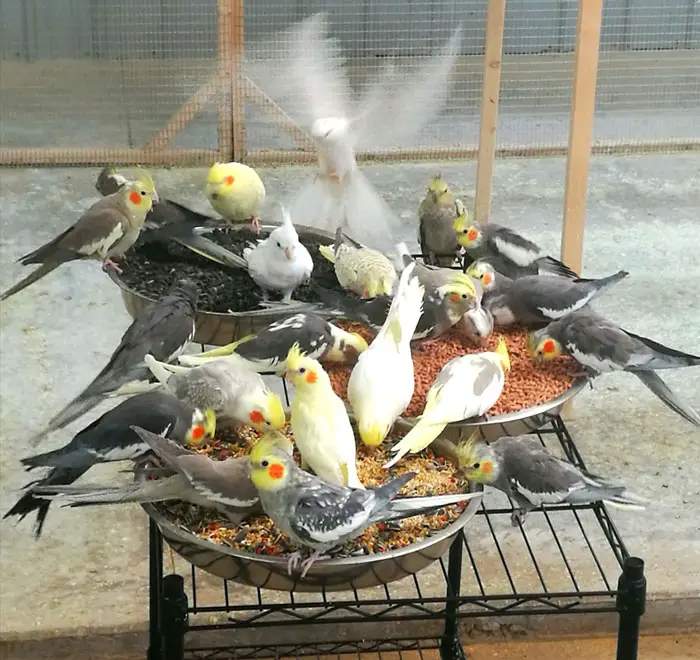
So here are some tips for indoor flying:
- Remove any potential hazards or obstacles from the flying area. For example, sharp objects, open windows or doors, and fragile items. Make sure that there is enough space for your bird to fly around.
- Make sure to get a flight harness. A harness or flight suit can keep your bird safe while flying indoors. It can prevent them from flying into dangerous areas or getting stuck in tight spaces.
- Start small. First, do some recall and landing training, and then do long flights. This will make the bird get used to flight.
Safety Considerations for Outdoor Flying
Once your bird gets used to indoor flying, you need to take it outdoors for a change of scenery and for more serious flight training. But before that, you have to consider some things:
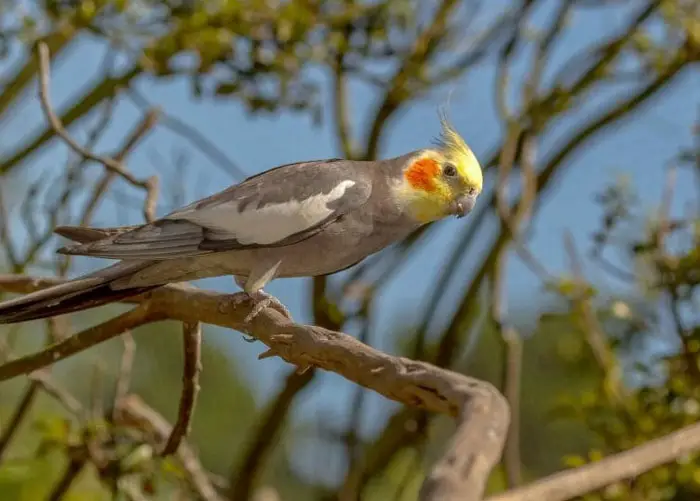
Whether Condition
It is important to avoid flying your bird in extreme temperatures. This can be dangerous for their health. Additionally, avoid flying during rain or strong winds. It’s dangerous because your bird may lose control and become injured.
Predators
Another important safety consideration is the presence of predators. If you live in an area with birds of prey or other predators, it is best to avoid outdoor flying altogether. But if you still desire it then consider using a bird harness or enclosure to keep your bird safe.
So, you need to have some precautions before going outdoors. Here is what you can do:
- Keep your bird in sight
- Choose a safe place to fly around
- Always stay alert
- And lastly have an emergency plan
With a little caution, your pet friend can have a safe flying experience.
FAQs
There are so many things still left to be discussed. You can have all your answers here at a glance:
Yes, all cockatiels can fly. By the time they are 4 weeks old, they are ready to fly. If even after doing anything your pet doesn’t take flight, you need to consult a veterinarian.
The best equipment for bird flight training is bird harnesses and flight suits. Apart from that, you would need treats, toys, perches, a target, and a bird cage.
By 4-5 weeks after birth, cockatiels are ready to fly. If your cockatiel flaps its wings in the cage often, it is ready to take flight exercise.
It mostly depends on your bird’s caliber. But in general, you should train your bird for 10-15 minutes every day.
Cockatiels start learning to fly at a very young age. When these small ones first respond to recall training or hop on your hands, give them a reward. This will teach the bird that good things happen when she flies to you. So, she will be more likely to do it again.
Conclusion
So, do you now know how to teach a cockatiel to fly safely? Well, I am sure you do. With some treats and encouraging words, you can make your pet perform flight exercises. But before you go through this exercise, do some indoor recall training and landing training. Flight traning helps them exercise, develop their muscles & coordination, and build confidence. It is also a great chance to bond with your bird.
But, Remember not all birds take the same amount of time to learn. Some fly in a day and some needs weeks of training. But even with all the efforts if your bird does not fly take it to a doctor. And before you conduct this flight training take proper safety measures. Sometimes it’s better to ask a bird trainer to help and supervise you through the process.
